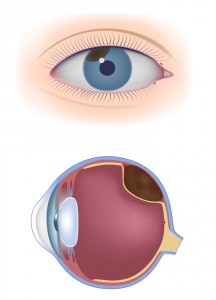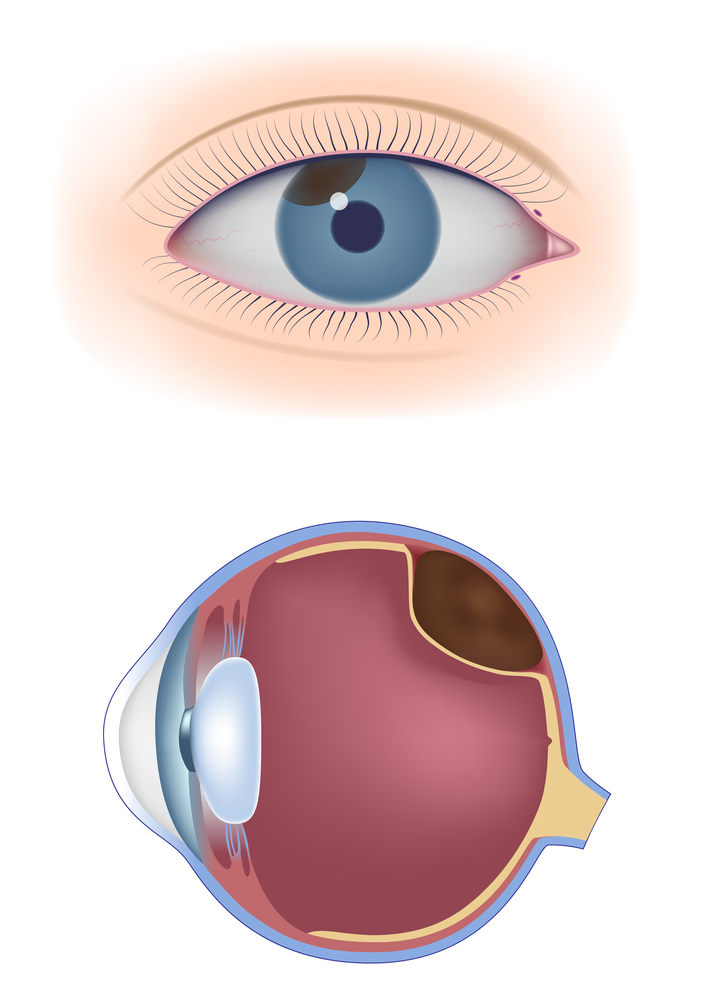 In a recent study titled “Uveal Melanoma Treated With Iodine-125 Episcleral Plaque: An Analysis of Dose on Disease Control and Visual Outcomes”, published in the International Journal of Radiation Oncology.Biology.Physics, researchers investigated how tumor control, radiation toxicity, and visual outcomes are affected by the radiation dose at the tumor apex in the treatment of uveal melanomas.
In a recent study titled “Uveal Melanoma Treated With Iodine-125 Episcleral Plaque: An Analysis of Dose on Disease Control and Visual Outcomes”, published in the International Journal of Radiation Oncology.Biology.Physics, researchers investigated how tumor control, radiation toxicity, and visual outcomes are affected by the radiation dose at the tumor apex in the treatment of uveal melanomas.
Uveal melanomas are malignancies of the eye, which involve the iris, cilliary body or choroid (uvea). These tumors arise from melanocytes within the uvea (responsible for eye color), and are one of the most sensitive entities in optometry.
This type of melanoma, even though rare, can endanger the eye and eventually lead to death. It is estimated to have an incidence of roughly 5.1 per 1 million, however, the risk for metastasis is considered high, approaching 50%.
There have been recent scientific discoveries that helped to further understand the nature of melanomas, including the role of mutations in several genes.
Currently, uveal melanomas fall into two categories, class 1 tumors, which are associated with a low metastatic potential, and class 2 tumors, which are more threatening.
The Collaborative Ocular Melanoma Study has gathered scientific evidence on the efficiency of brachytherapy and enucleation for the treatment of melanomas, however, both treatments carried risks and were extremely invasive, with 49% of patients losing six or more lines of acuity during the 3 years of treatment.
Based on these results, it became clear there was a medical need for a treatment that could prevent metastasis while preserving the eye.
As such, Dr. Bradford A. Perez and colleagues, from Duke University, Durham, North Carolina, set to efficiently treat uveal melanomas while at the same time minimizing collateral damage.
They preformed a retrospective review to evaluate patients treated for uveal melanoma with 125Iodine plaques between 1988 and 2010. The amount and location of radiation was assessed to determine if both factors influenced the primary endpoints of tumor growth, metastasis and death.
Different groups were formed depending on the dose of radiation they received, from < 69 Gy to >89 Gy.
Researchers found no relation between radiation dose and local failure or metastasis. Furthermore, the 5-year survival rate was 84% among all patients, and 91% of tumors were locally controlled. However, the majority (73%) of patients treated suffered from side effects such as radiation retinopathy and cataract formation. Patients who received the highest dose of radiation presented higher mortality rates and were more likely to have deteriorated vision. In contrast, patients who received low doses of radiation had better visual acuity, less radiation-related side effects and lower rates of enucleation.
The results from this study demonstrate that the amount of radiation delivered in the treatment of uveal melanomas should be seriously reviewed, since in some cases, treatment does not improve a patient’s prognosis.


